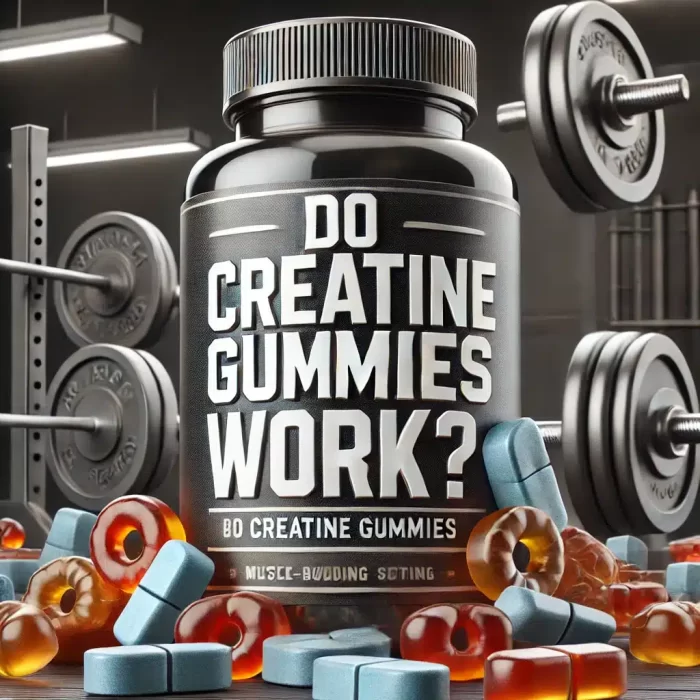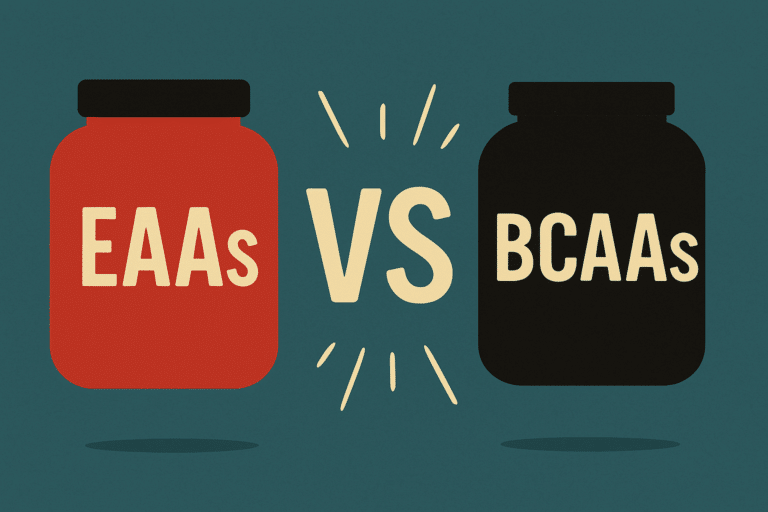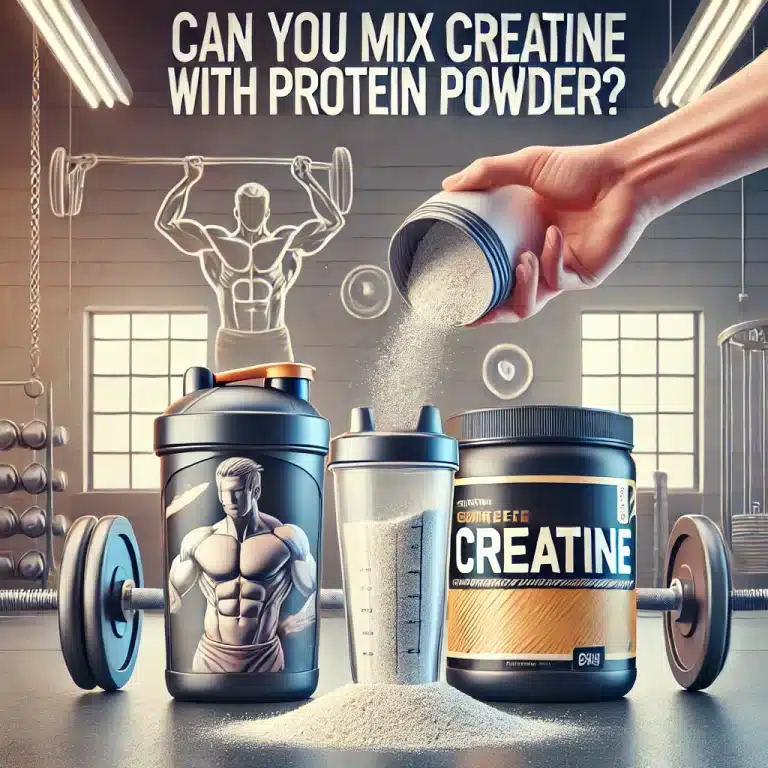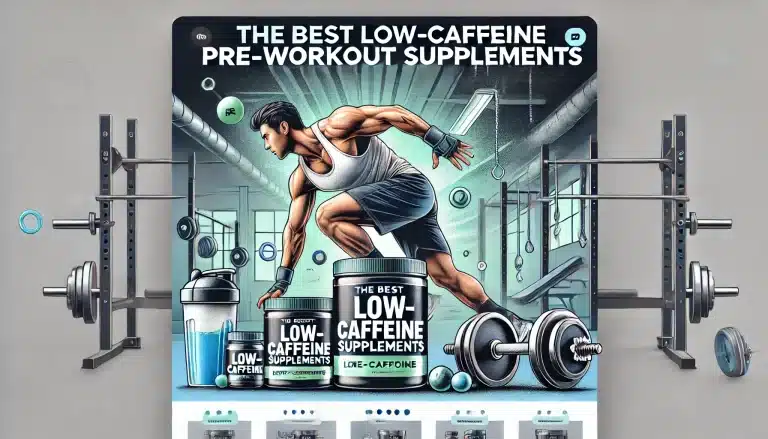Do Creatine Gummies Work?
It has been a game-changer in the world of fitness, helping athletes, bodybuilders, and even ordinary gym-goers enhance their strength, endurance, and recovery. Creatine has been available for quite some time. In the past, creatine powder and capsules have been the most popular products on the market; now, there is a new trend that has emerged: creatine gummies.
The appearance of creatine gummies may give the impression that they are the ideal combination of convenience and efficiency. There are no messy powders, and there is no requirement for water; instead, it is a chewable supplement that delivers the same muscle-boosting advantages as other supplements. But are they effective? Do they represent yet another trendy trend in the fitness industry?
I will explain the science behind creatine gummies, how they compare to standard forms of creatine, and whether or not it is worthwhile to include them in your supplement program. I am someone who has used and researched creatine extensively. Let’s jump right in.
What Are Creatine Gummies?
In place of the time-honored powders and pills, creatine gummies provide a novel and hassle-free method of supplementation. Creatine monohydrate or other creatine compounds are chewable and presented in a candy-like style in these gummies. If you’re looking for a nice and easy way to supplement with creatine, these are a great option because they remove the hassle of mixing powders into drinks or swallowing big capsules.
Creatine gummies are convenient, tasty, and easy to carry around, unlike powders and pills. Gummies are more appealing to the taste buds than gritty or unflavored powders that require water for mixing because they are typically fruit-flavored, chewable, and soft. Plus, you won’t have to worry about scooping and estimating doses because they come in pre-measured portions.
The main components of the majority of creatine gummy supplements are:
- Creatine monohydrate is the form of creatine that has been studied the most and is known to improve power, endurance, and muscle recovery.
- Sweeteners and flavors: These give the sweets a nice taste and make them easier to eat than powders that are bitter or gritty. There are brands that use natural fruit flavors and brands that use artificial sweeteners to keep the sugar level low.
- Binding agents: Gelatin or pectin are examples of ingredients that help make a chewy structure. Pectin-based gummies are plant-based, so they can be eaten by vegetarians and vegans. Gelatin-based gummies have a softer, more standard gummy candy feel.
- Other useful ingredients: Some creatine gummies have extra amino acids, B vitamins, or electrolytes to help with energy, staying hydrated, and muscle repair.
People who like creatine gummies the most are those who:
- Don’t like the way creatine powder tastes or feels
- Don’t want to mix or add water to a quick dose you can take on the go?
- Having trouble taking pills or capsules
- Want to take supplements in a way that is more fun, like candy
But while creatine gummies are handy, how well they work depends on how much you eat. Many brands only give you 1-2 grams of creatine per gummy, so you might have to eat a few every day to get the 3–5 grams of creatine that you should get every day. When picking between gummies and other types of creatine, this is something to think about because it can change the price, the amount of sugar you eat, and how useful the product is.
Overall, creatine gummies are a new and easy way to take a supplement that has been around for a long time. But what makes them truly valuable is how much you take, what ingredients they contain, and how they fit into your fitness schedule.
Do Creatine Gummies Work as Well as Powder or Capsules?
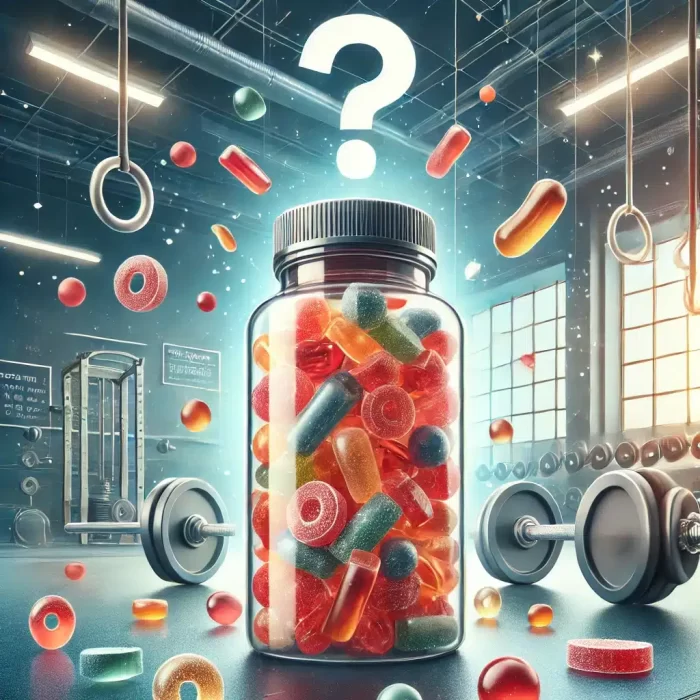
Absolutely, provided the gummies include a sufficient dose of creatine. If you’re curious about the effectiveness of creatine gummies compared to traditional powder or capsules, the quick answer is yes, provided they deliver the appropriate dosage of creatine. However, there are several factors to weigh before replacing your conventional creatine with a chewy, fruit-flavored option.
Do Creatine Gummies Provide Enough Creatine?
You need three to five grams of creatine daily to keep your muscles saturated for it to work. While 20 grams everyday for a week is common during loading, the optimal dosage for long-term use is between 3 and 5 grams per day.
This is the part when gummies might not work. Since many brands only have 1-2 grams of creatine per gummy, you may have to consume 3–5 gummies daily—or even more—to achieve the recommended dosage. That’s not a huge deal, but it does indicate that you’ll need to buy more bottles than you would with powder or pills.
The gummies will be equally effective as other versions as long as you take at least three grams daily. If the brand you’re considering just provides a gram or two for each serving, though, you’ll have to take a lot of them or think about another option.
Is Creatine Absorbed the Same Way in Gummies?
It is true that creatine is creatine, regardless of the form that it is found in. Regardless of whether you take creatine in the form of a powder that is mixed with water, a capsule, or a gummy, your body is able to absorb and utilize it effectively.
Having said that, there are a few distinctions between the rate at which powdered creatine is digested and the rate at which gummies consume it:
- The fact that creatine powder dissolves in fluids indicates that once it is ingested, your body can absorb it quite fast.
- However, the difference is not significant; the reason for this is that your stomach needs to metabolize the gummy before the creatine is released. Gummies take somewhat longer to break down and digest than other types of candies.
- Some gummies have additional sugars or carbohydrates, which can facilitate the absorption of creatine by inducing a moderate insulin response. This response is responsible for the more efficient delivery of nutrients to muscle cells.
To put it another way, as long as you are consuming the appropriate quantity, creatine gummies will function just as effectively as powder or capsules. Only the amount that you need to take, the price, and whether or not you like chewing gummies over mixing a drink or swallowing tablets are the only things that truly differentiate the two choices.
When Might Gummies Be a Better Option?
Creatine monohydrate or pills may not be the best option for all individuals. Maybe you’re not a fan of mixed drinks because of their texture or flavor. Perhaps you have a hectic schedule and would rather have something you can chew and put aside. Alternatively, perhaps you find it difficult to swallow huge medications.
A fantastic situation in which gummies might work as a replacement is when:
- You should not be required to carry a shaker or mix powders.
- You have difficulty swallowing any kind of medication.
- Instead of basic creatine, you’d like something with a little more flavor.
- You should look for a solution that is easy to transport.
However, powder or capsules may still be the easier and more economical choice if you like to take your three to five grams all at once.
Creatine gummies and other forms of the supplement are functionally equivalent; the deciding factors are personal preference, cost, and the way you live your life.
Pros and Cons of Creatine Gummies
There are benefits and cons associated with creatine gummies, just like there are with any other supplement. If you are considering switching from powder or capsules, the following are some things you should think about before making the transfer.
Pros of Creatine Gummies
- An Extremely Convenient: This eliminates the need to carry a shaker container, measure scoops, or mix powders manually. Simply grab a gummy on your way out the door, and it is very simple to bring on a plane!
- Tastes Better: Let’s be honest: even in flavored forms, creatine powder can have a taste that is gritty or bland. The fact that gummies have a pleasant flavor makes taking supplements feel less like a chore and more like a joy.
- Creatine powder is easier on the stomach, but some people find that it causes them to experience bloating, cramping, or digestive discomfort. This is especially true when they do not consume enough water. Gummies are typically easier on the digestive system, and some of them even come with electrolytes that are added to them to help sustain hydration.
- If you are constantly on the move and don’t want to carry a water bottle simply to take your creatine, without the need for water, this is the perfect solution for you.
- Powder supplements can be notoriously messy, particularly in the event that a container breaks or spills while you are carrying them in your backpack. As a result of their pre-measured, portable, and TSA-friendly nature, gummies are an excellent choice for individuals who journey frequently.
Cons of Creatine Gummies
- Lower Amount of Creatine Per Serving: Most gummies only have one to two grams of creatine in them, which means you might need three to five gummies a day to get the right amount. It might be harder to keep track of how much you’re taking in than if you just used one scoop of powder.
- It costs more because you need more gummies every day, so a bottle won’t last as long as a tub of creatine powder. In the long run, this could mean that you pay more for the same amount of creatine.
- Added Sugars and Calories: Many types of gummies keep the amount of sugar in them low, but some do add sweeteners or carbs to make them taste better. This is something to keep an eye on if you’re on a low-carb or low-calorie diet.
- Fewer Brands to Choose From: Since creatine gummies are still pretty new, there aren’t as many companies that sell them as there are powders or tablets. You might not be able to pick as many tastes, doses, or ingredients.
Finally, creatine gummies are easy to use and taste good, but you should read the package to make sure you’re getting the right amount for the right price.
Who Should Consider Using Creatine Gummies?
Some people like creatine gummies better than other pills because they give them a different way to be taken.
You might love creatine gummies if:
- You don’t like taking pills or mixing powders. Gummies are a great way to stay on track with your supplementation if you don’t like the taste or texture of creatine powder or think pills are too big.
- You need something quick and easy to grab and go. If you are busy and don’t have time to make a shake, you can chew a candy instead. It only takes seconds and doesn’t require any extra work.
- You get bloated or have gut pain when you use powders. Traditional creatine powder can make some people bloated, crampy, or have stomach problems, especially if they don’t drink enough water with it. Maybe gummies are easier on the stomach because they already have the right amount of sugar in them.
- Flavored vitamins taste good to you. You get a candy-like treat instead of a drink that might not mix well. This makes taking creatine feel like a small prize.
- You go on many trips. Powdered supplements can spill or need extra containers, but gummies are easy to pack and don’t have to think about TSA rules or spills.
You might want to stick with powder or capsules if:
- You want the choice that will save you the most money. If you buy a lot of it, creatine powder is the best way to get a daily dose that works. Giving someone gummies is easy, but each one will probably cost more.
- One serve should give you the whole dose. When you use powder, one scoop gives you the whole three to five grams. With sweets, you may need more than one piece every day, which can be a pain.
- You’re staying away from extra sugars. There are sugar-free sweeteners in some creatine pills, but others have extra carbs and calories that might not work with your diet.
But traditional creatine powder is still the best and most cost-effective choice if you are on a tight budget, want a bigger dose in each serving, or don’t mind mixing powder.
How to Use Creatine Gummies for Best Results?
Although creatine is easy to take, there is more to it than merely chewing a gummy and hoping for the best. Follow these steps to use creatine gummies correctly for maximum muscle gain, performance, and recuperation.
1. Get the Right Daily Dose
Getting the right dosage of creatine is the most critical aspect of supplementing. According to studies, the optimal daily dosage for keeping muscle saturation levels stable is three to five grams. On the other hand, you’ll probably have to eat a lot of gummies every day to get the recommended dosage of creatine because most of them only have one or two grams per serving.
- To ensure you get at least three grams of sugar every day, read the label and count out the number of gummies you’ll need.
- Three or five gummies daily will be required to achieve the maximum benefit of creatine if a serving only contains one gram.
- If you want to get the most out of creatine for strength training, endurance, and recovery, don’t skimp on the dosage.
For a more rapid muscle saturation, you can take 20 grams daily (divided into four dosages) for five to seven days in a loading phase, and then three to five grams daily for maintenance. You might not want to conduct a loading phase with gummies unless you’re planning on chewing a lot of them every day because each serving contains smaller doses.
2. Be Consistent, Creatine Works Best When Taken Daily
One of the most common mistakes people make with creatine is taking it inconsistently. Unlike pre-workout or protein supplements, creatine works gradually in your muscles. If you skip days or only take it before workouts, you will not reap the full benefits.
- Take your creatine gummies every day, whether you’re exercising or relaxing.
- Choose a constant time that works best for your schedule, whether it’s in the morning, before or after a workout, or even before bed.
- Creatine stays in your system for a long period, thus consistency is more important than timing.
Consider creatine to be a fuel tank; once your muscles are fully saturated, you will begin to notice results, but you must continue to top off the tank on a daily basis to retain them.
3. Pair It With a Solid Workout Routine
Although it isn’t a miracle drug, creatine is one of the most well-established performance-enhancing supplements. No matter how many gummies you take, you won’t get the full benefits if you’re not training properly.
- Prioritize progressive overload, which entails progressively increasing the weight, repetitions, or intensity over time.
- Combine compound exercises that work numerous muscular groups and optimize the effects of creatine, such as squats, deadlifts, and bench presses, with strength training.
- Creatine can still aid in stamina and recovery during endurance exercise, although its effectiveness is greatest during resistance training.
Creatine aids in muscle repair and energy generation, but its effectiveness requires a steady exercise stimulus.
4. Stay Hydrated, Creatine Pulls Water Into Your Muscles
Muscle cells are able to absorb more water when using creatine, which boosts hydration, endurance, and strength production. However, moderate gas, cramps, or dehydration could occur if you don’t drink enough water.
- Make it a point to drink 90 ounces of water every day if you weigh 180 pounds, or half your body weight in ounces.
- If you experience a minor gassiness during initial use of creatine gummies, it is likely due to an increase in water storage in your muscles rather than fat growth.
- Hydration is key to getting the most out of creatine and avoiding any unwanted side effects, such as cramps.
5. Time It Around Your Workouts for Extra Benefits
While daily consistency is more crucial than timing, some people prefer to take creatine before or after a workout for added advantages.
- Pre-Workout: Taking creatine 30-60 minutes before exercise will assist enhance ATP energy production, resulting in better brief bursts of power and endurance.
- Post-Workout: Creatine works well with protein and carbohydrates to assist muscles to recover and restore energy stores.
Some studies suggest that taking creatine after an exercise may be somewhat better for muscle building, but the total benefit is negligible. What’s the key takeaway? Take it whenever it works best for your schedule; just don’t skip it.
6. Store Your Gummies Properly
Because creatine gummies contain gelatin or pectin, they must be kept in a cool, dry environment to preserve their texture and effectiveness.
- Keep them in a sealed container to prevent moisture from making them sticky or degrading the creatine.
- Avoid keeping them in a hot car or in direct sunshine since heat can melt or damage the gummies.
- Check the expiration date. While creatine has a long shelf life, gummies with additional components may have a shorter best-by date than powder.
7. Consider Your Diet and Supplement Stack
Creatine is one of the most researched and useful supplements; nevertheless, it is most effective when taken with a diet that is well-balanced and supplements that include other essential nutrients.
- There is some evidence that combining creatine with carbs and protein can improve muscle uptake and recovery.
- It is possible that including electrolytes in your regimen will enhance your hydration and performance if you are deficient in magnesium, salt, or potassium.
- By combining creatine with a diet that is strong in protein, you will be able to maximize your gains in muscle growth and strength.
Final Verdict: Do Creatine Gummies Work?
Creatine gummies can be effective, provided they have a good dose of creatine monohydrate in them. They offer all the same perks as creatine powder or capsules, just in a chewable and easy-to-use form. But, because of the lower doses per serving, higher prices, and extra sugars, they might not be the right choice for everyone.
If you’re all about convenience and flavor, creatine gummies might just be the perfect way to get your creatine fix. If you’re looking for the most cost-effective and efficient option, creatine powder or capsules are the way to go.
